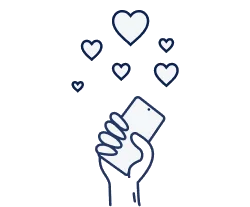Follow Us!
Patient stories, informative videos and much more on our social media accounts

Numbers of couples wanting to have children are increasing each passing day. Due to physiological and environmental factors reproductive problems increase and developments in medical field are becoming a hope to those couples. Duo stimulation (duo stim) method is increasing the chance of a successful treatment patients with low ovarian reserve.
Thanks to duo stim method, we can apply OPU (egg collection) procedure twice in the same cycle. In this way, we increase the chance of success to give happy news to couples in a shorter time.
Reproductive health specialists continue to work on the low ovarian reserve and shortage of ovarian reserve defined 30 years ago by using all the means of technology and make expectant mothers happy. All the possibilities of technology are being evaluated to find the ideal method for women with low ovarian reserve.
Low ovarian reserve today; is accepted as the ability to collect 3 or less eggs in IVF treatments performed with appropriate drug doses for mother-to-be. This situation can occur in all women who have started IVF treatment. However, the risk is higher in patients in the following groups.
Today, different protocols and different drug combinations are applied during IVF treatment for patients diagnosed with low ovarian reserve. In addition, after the first unsuccessful IVF treatment, it is observed that patients with low ovarian reserve stopping their treatment are at a very high rate.
Developments over the past years have led to the emergence of new and unconventional ovarian stimulation protocols. These developments have led to advances in the management of patient populations with poor ovarian reserve.
Double ovarian stimulation (Duo Stim) in the same menstrual cycle is currently considered one of the most promising developments in the treatment of patients with low ovarian response to stimulation with medications.
In classical methods, ovarian stimulation is started in the early stages of the menstrual cycle. Some recent studies with therapies applied for the protection of fertility in patients undergoing oncological treatment or women with low egg reserve have revealed that sufficient number and quality of eggs can be obtained in ovarian stimulation initiated in the second half of the ovarian cycle.
In the Duo Stim method, if there are eggs that can be seen by an ultrasound scan within a few days following a standard egg collection procedure, these eggs are tried to be grown with a protocol similar to the stimulation performed in the first phase.
Since an embryo transfer cannot be performed in this process, the ‘freeze-all’ strategy is adopted for all eggs obtained and frozen embryo transfer is planned in the following period.
Previous studies have shown that traditional ovarian stimulation protocols repeated up to 3 times in women with a low egg response can increase total live birth rates.
However, it is very difficult for these women to continue up to 3 treatments in physical, mental and economic aspects. In fact, in the intervals between repeated treatment cycles, the rate of patient discontinuation is a very important issue.
The study results show that the Duo Stim method can reduce the cessation of treatment in women with poor egg responses. This also increases the chances of patients having a good quality embryo in a short period and thus a live birth.
There is no age restriction in the application of the Duo Stim method. However, three groups of patient profiles constitute the main application area. This method is applied to especially;
1) Advanced female age (usually 40 years and over is considered)
2) Women with low ovarian reserve markers (serum AMH or antral follicle count, AFC) below accepted thresholds
3) Women with low egg response to ovarian stimulation in previous in vitro fertilization trials (it is often accepted that 3 or fewer eggs can be collected)
Let us call you as soon as possible regarding the issues you want to consult.


